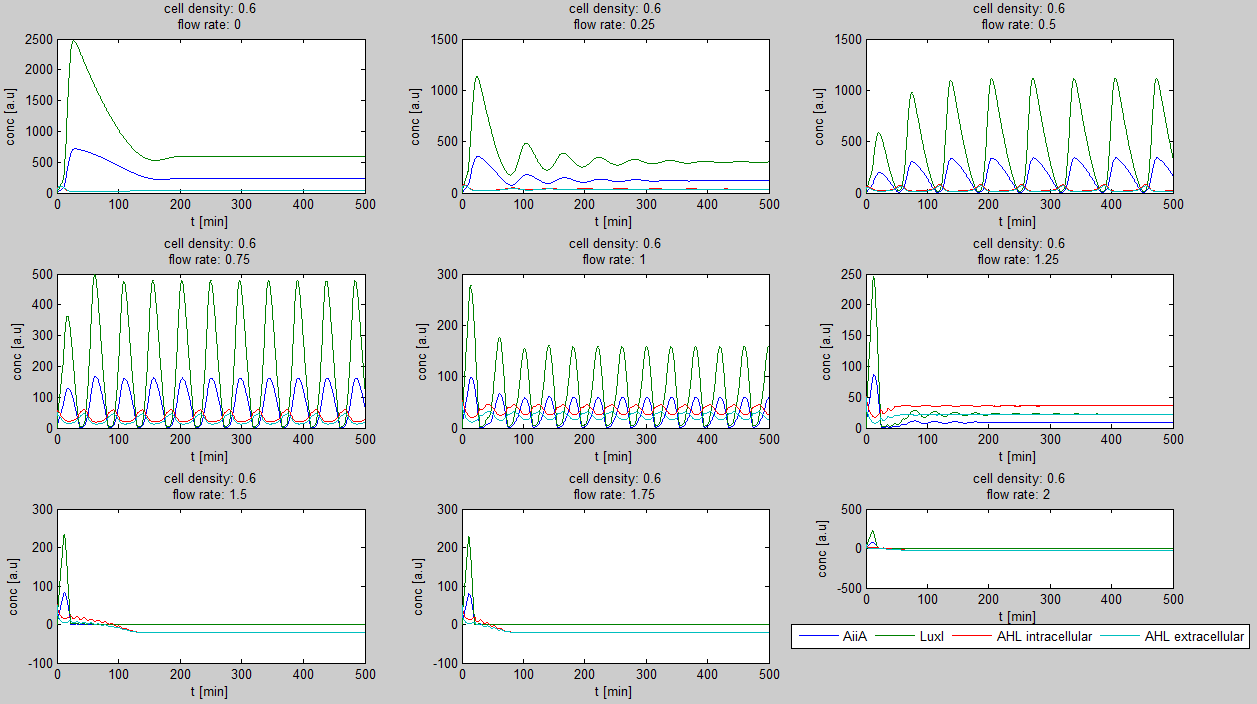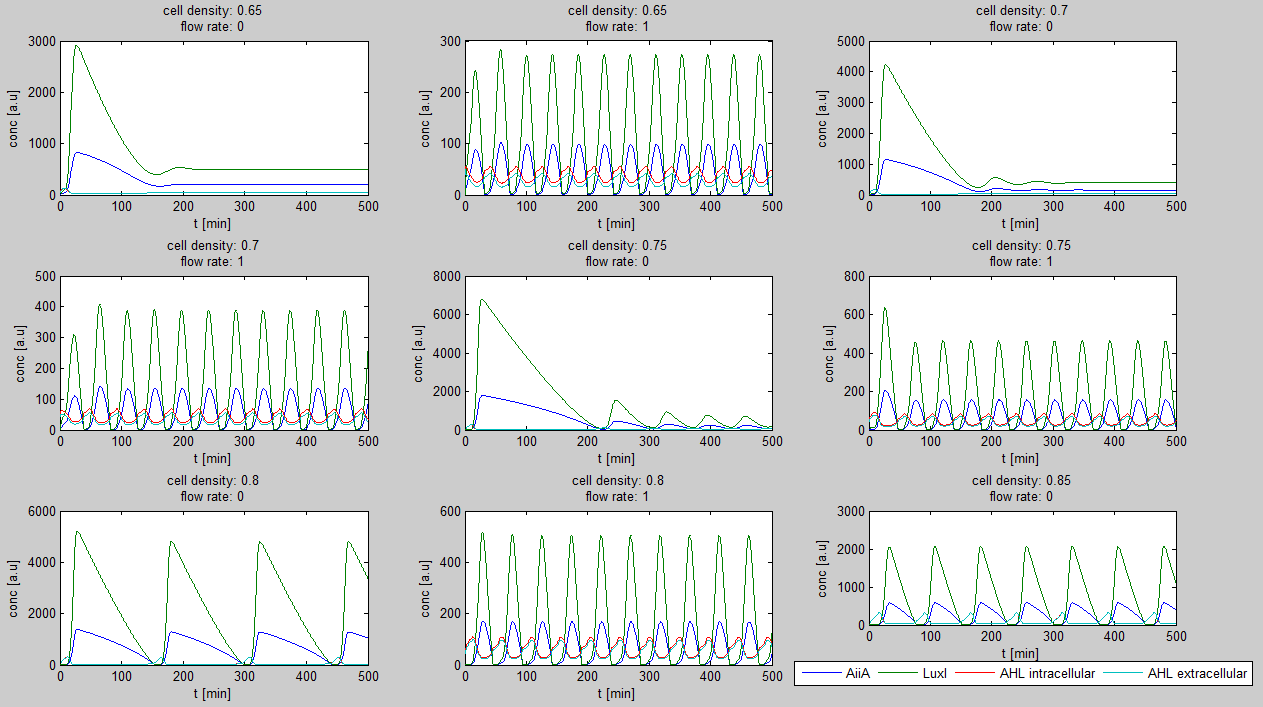Mathematical model of the Hasty construct
Since our bio bricked oscillatory system is based on the circuit published by Danino et al. in the paper [http://www.nature.com/nature/journal/v463/n7279/abs/nature08753.html “A synchronized quorum of genetic clocks”], in our team commonly referred to as the "Hasty construct", our first model of the system is a reproduction of the mathematical model in the [http://www.nature.com/nature/journal/v463/n7279/suppinfo/nature08753.html supplementary information] accompanying the publication mentioned. In their simulations, Danino et al. used a set of four delay differential equations, which we also used as starting point for our modeling work.
The steps (transcription, translation, maturation etc.) from the luxI and aiiA genes to the corresponding proteins are not modeled separately, but the delay of the correlation between the internal AHL concentration, which triggers the expression of the genes, and the corresponding AiiA and LuxI is simulated by a Hill function which takes the history of the system into account, i.e. the concentration of AHL at the time it binds to LuxR to form the activation complex.
Writing a modeling tool in matlab
Fig.1: GUI of the matlab modeling tool created by team Wageningen UR
For the first simulations, the same parameters were used as in the cited paper, the only variables being the cell density and flow rate. To get an idea about the different conditions in which oscillations could occur, our team created a script for a matlab modeling tool which uses nested for-loops to vary the flow rate and cell density over a range of values. The resulting tool allows the user to enter the range in which the variables should be varied. The tool then iterates over the values and plots graphs of all combinations possible for that range of values. Figure 2 shows an example output of the tool.
Fig.2: Variation of output graphs depending on the different starting conditions
Preliminary conclusions for our system
The first observation from the model was that, for oscillations to occur, the flow rates may not be too fast, especially at lower cell densities. Since the device used for our system has larger dimensions than the microfluidic device used by Danino et al. the flow rates in the velocities required could not be achieved by varying height differences alone.
Furthermore, an interesting observation was that applying a flow rate over the cells was not essential to obtain ocillations. Figure 3 shows how, according to the model, oscillations can potentially occur at 0 flow rate. Interesting is that this happens only at high cell densities.
Fig.3: Graphs showing oscillatory behaviour increasing with cell density even when the flow rate is set to 0
Disregarding the strictly mathematical model, some more conclusions were drawn from modeling work as to whether to use a micro-dish or micro-sieve as platform for measuring oscillations. This is described in more detail in the section about the setup of the device.
 "
"





